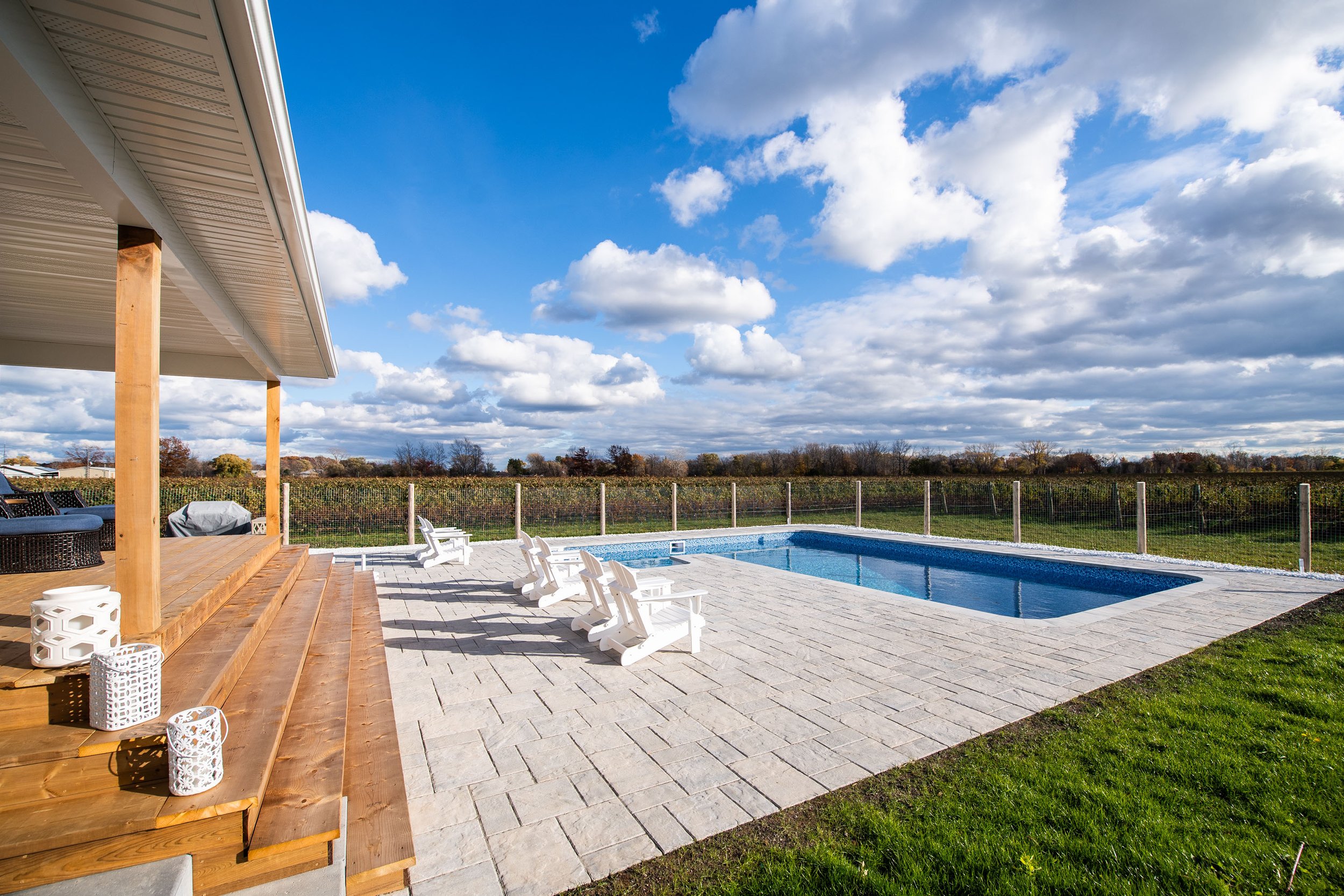Septic? More Interesting Than You Can Image… Really!
Hey Everyone!!
It’s been some time since I gave an update on our home renovation, sorry about that. But, thanks for checking back in. We had a delay in getting our permits and the culprit was our old, poorly positioned septic system.
So, septic systems…not something I thought I would ever be speaking about or be excited over. But, in doing the homework for the system that would be right for us, we came across a really cool company; Ecoflo.
Since we live in the country and are not connected to municipal services, we were hoping to keep our existing septic during our renovation. But, as it turned out , we couldn’t for a few reasons:
the age of the septic system…so old the municipality didn’t even have a record of it!
it would have been too close to our planned covered deck, so it didn’t meet building code standards and we weren’t going to give up the covered deck …..so looking forward to sitting on it while sipping a glass of wine…ahhhh
Was this a bummer? Yes and no. We now needed to dig deeper into our pockets to put in a new septic system, but on the upside we were now going to have a new system that will give us peace of mind for many many years to come.
Once that decision was made for us, we now started researching our septic options. I have to say the learning curve was steep here. There isn’t a one stop shop for septic systems. There are a lot of people involved; a designer, an installer, inspectors, permit approvals etc. All of this takes time for each person to do their part. If you are planning a renovation or build where you require a septic, check your septic requirements early on so you don’t end up having delays like we did. This way, you can have time to do the homework to find out what works for you, get informed and make the proper arrangements in order to keep your project on track.
In a nutshell, modern day septic systems work in three parts that include:
Septic tank – this is where all the waste water from sinks, laundry and toilets go
There aren’t a lot of different options out there for the tanks. Your designer will take into consideration such things like the size of your home, how many sinks and bathrooms etc. to determine what size of a tank you need.
Filter – this is where the waste water is filtered and treated
This is an important choice and there are lots of options out there and at times we felt overwhelmed. We knew we wanted something that minimized the impact on the environment, was cost efficient and would provide the long term investment and peace of mind we were looking for.
We finally landed on the Ecoflo biofilter. Now, Ecoflo provides the filter that I just mentioned, which treats and filters the waste water making it safe to move to the septic bed where it is returned to the ground. This is a Canadian product, which we really wanted, but they offered so much more.
To make a long story short, let me run down for you why we chose to go with the Ecoflo bioflter:
Sustainable treatment
It provides the industry’s lowest carbon footprint
Other than the pump, there are no additional electricity requirements for the treatment of the wastewater
The medium used to filter the wastewater is coconut husks (in Ontario, we are required to add little bit of peat), which is natural, renewable and compostable and only has to be replaced every 10-15 years!
Installed for life
We never need to move or replace it
It won’t affect our landscaping
Peace of mind performance
Ecoflo biofliter will protect our property and the surrounding environment from contamination
We have an alarm that is wired into our home so we know right away if there are any performance issues and can deal with them before it turns into something much bigger
A warranty that we felt really good about
Long term investment
It will maintain the selling value of our home
Low operational costs. Once a year, we have certified technician conduct a yearly maintenance inspection and “rake” the coconut husks. We understand this will cost us about $250.00. A very reasonable price for that peace of mind I mentioned earlier
Another glitch we were faced with was that we couldn’t install the new system where the old septic had been and had to install it in a much smaller area. So, the fact that the Ecoflo biofilter is up to 50% smaller than traditional systems really appealed to us.
Septic Bed – this is where the filtered waste water is safely released back into the ground
These are a bunch of “fingers” that are just below ground which allows the clean, filtered water to safely go back into the soil. The size of the septic bed will also be determined by your designer and the guidelines for your area.
If you want to see more about our septic system journey, check the video below from out my Cityline segment.
Thanks again for checking in and stay tuned for more renovation updates!
~ Shoana
*I was very happy when Ecoflo agreed to partner with me on this project. You can be sure that all of the views and opinions expressed here are my own.

